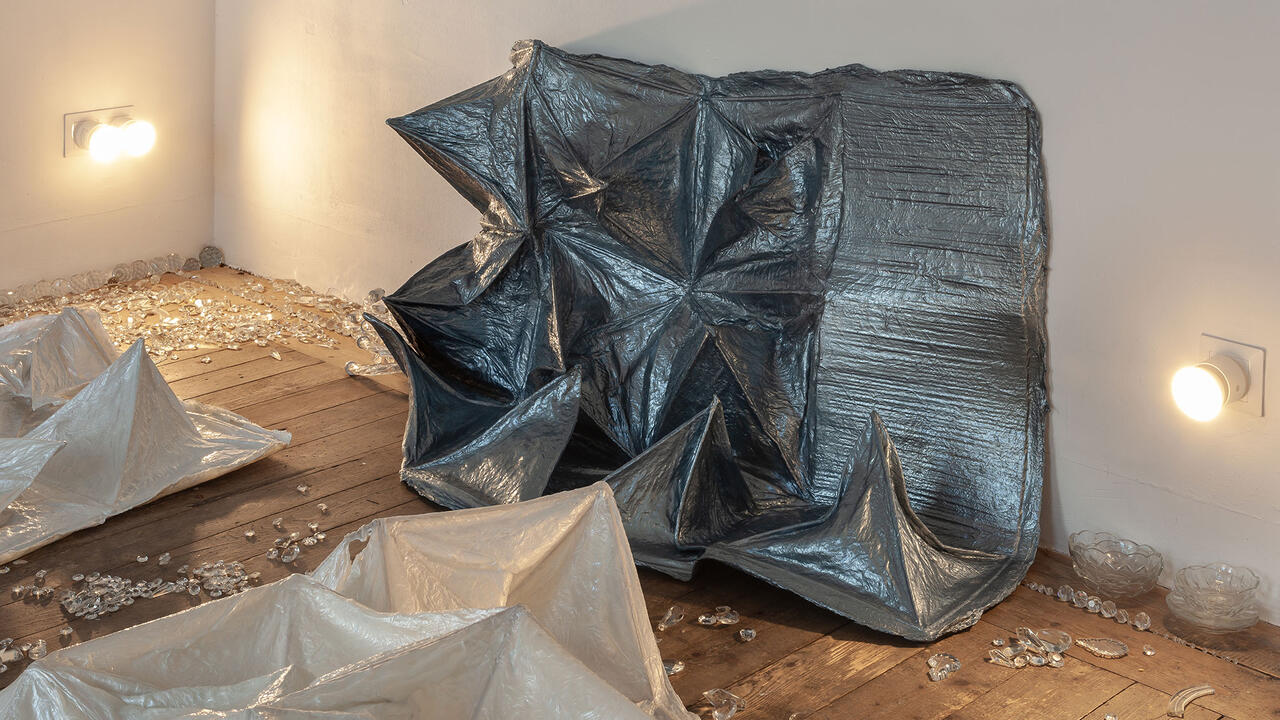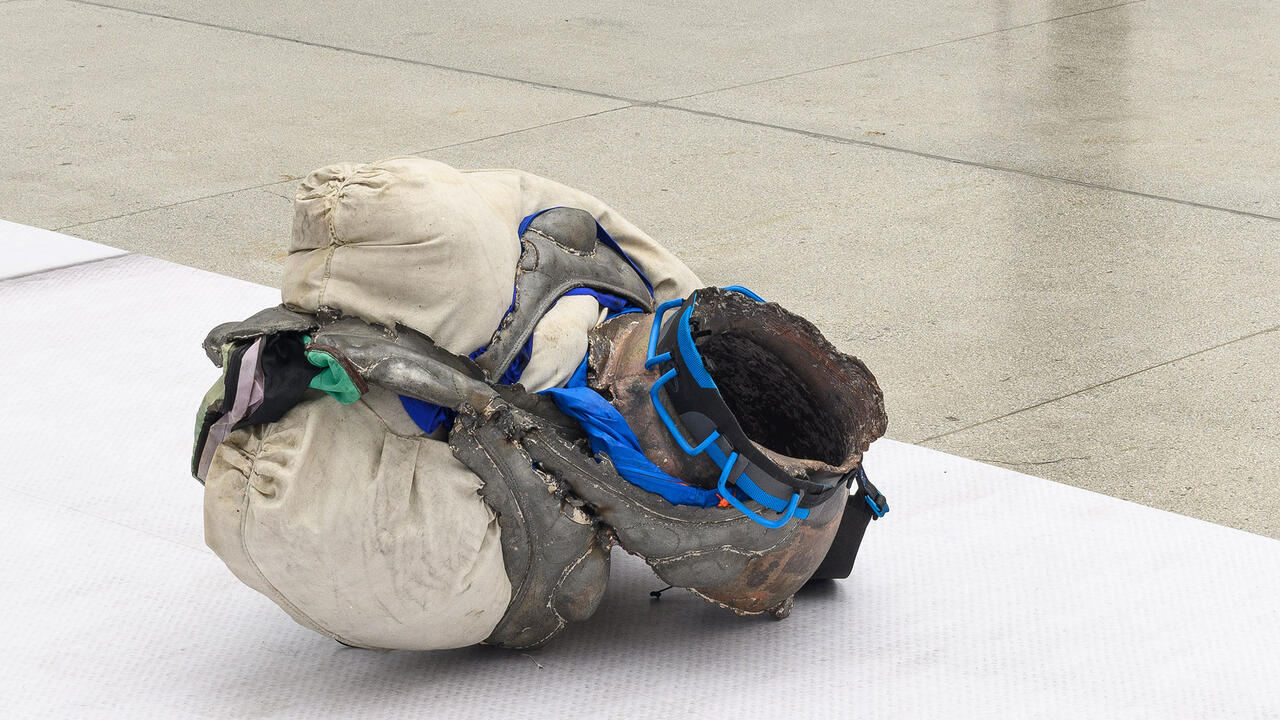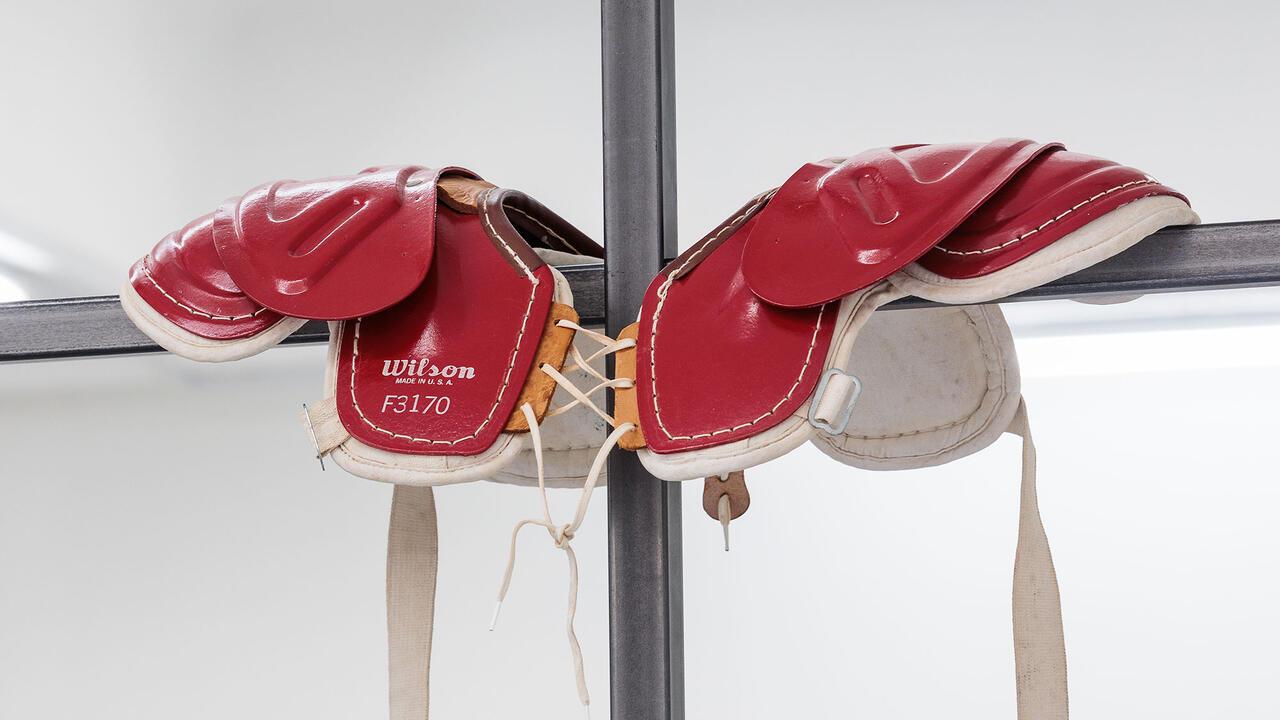Verena Dengler
Galerie Meyer Kainer, Vienna, Austria
Galerie Meyer Kainer, Vienna, Austria

In 2004, Verena Dengler liberated a sample of fabric from a worn-out couch. Since then, she has been reproducing its mix of seemingly avant-garde formal idiom and actual petit-bourgeois style in a series of silkscreen prints (‘Couch’, 2005–ongoing). When copying the design, she introduces only minimal alterations: the fabric pattern, which would otherwise exist as a ‘criminal’ ornament of everyday life, becomes an object of homage. In her work, Dengler appropriates décors, influenced either by Art Nouveau or African designs, and translates them into her printing and embroidery. She presents the results, shaped by the generational loss incurred through the copying of copies, behind cut-out mounts in cheap, reusable frames. For this, her first solo show at Meyer Kainer (in the gallery’s Boltenstern space), Dengler arranged these works into small groups around the room – they were either hung in series on the wall, or tied to, leaned against or fixed onto steel uprights and stands (as in Ständer Informell, Stands Informel, 2009), so that sculpture and print formed inseparable functional units.

Most of the objects to which the pictures were attached belong to the category of cheap ‘designer’ furniture (CD stands and clothes racks), but there were also custom-built steel structures whose polished surfaces Dengler scratched or damaged with white paint and plaster bandages. The practical function of the stands is already limited by the burden of their decoration, but, as if this isn’t enough, the artist weighs them down yet further with items such as hemp rope (Herrendiener (Die Muse Franz), Valet Stand [Franz The Muse], 2009). Works on paper are enhanced into three dimensions, while sculpture is downgraded by being rendered subservient to the two-dimensional: this opens up a new realm of tension within which the two practices are predicated on each other. The exhibition’s title, ‘Periferien’, is a German neologism combining Peripherie (periphery) and Ferien (holiday) – and, in this sense, rather than remaining a peripheral parasite, or a mere adornment of the sculpture, the ornament offers itself to the viewer as an attractive anchoring point, a holiday from purity and functionality. In behavioural biology, ornaments in the animal kingdom are viewed as sexually selected physical features that play a role in courtship, but the handicap of such conspicuousness – an increased likelihood of becoming prey – is also discussed. Dengler’s sculptures do not operate from the position of potential victim: she makes design tip over into gestalt, and in so doing reorders the stereotypes of ornament associated with the female and sculpture with the male.
Dengler’s untitled embroidered pictures (2008–9) are based on her own expressive gesture. Quickly committed to paper, the line translated by Dengler into embroidery implies a strict loyalty to what had seemed the completed trace of a recent creative outburst. Here too, then, she sins against Adolf Loos’ ‘Ornament and Crime’ (1908): the ‘evolution of culture’, claimed by Loos to be synonymous with society overcoming ornament, emerges in Dengler’s work as an unrestrained engagement with it.
Translated by Nicholas Grindell






















